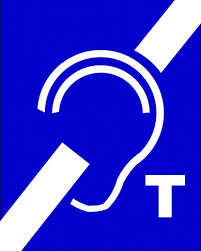The World’s Shortest Audiology Course (Delivered by a Client)

Hearing care professionals believe they know what people need in order to hear better. After all, they’ve gone to school to learn this.
People with hearing loss (PWHL) know they want to hear better, but believe they don’t always get what they need from the professionals. And after all, they’re the ones struggling to hear.
Does the audiology training process need to be better connected to the people being served? As a lifelong consumer of hearing health services, I’ve got a pretty good idea of what I need. (I think.)
When I give presentations to university and college students who are training to be hearing care professionals, I’m there as a real, live PWHL trying to give the client perspective to what they are learning in theory in Audiology school. Is there any university out there that wants to invite me to deliver the World’s Shortest Audiology Course? This is what I would say:
- Close your computers please, and look at me while we talk. Your clients will need the same courtesy. I’ll follow up with a print or electronic version; you should do the same for your clients after every appointment.
- Paint the Big Picture. The journey to better communication is a partnership and both professionals and PWHLs have roles. Explain yours and explain your vision of theirs. Ask if they have a different vision. Come to an agreement. Write it down, spit in your hands, and shake.
- Learn all the technical stuff about audiology and technology and then articulate the important bits to your clients. Neither dumb it down or Einstein it. Keep it real.
- Communicate better. Even if people say you already speak well, learn what your clients need and then deliver: Face them when you speak. Always. No exceptions. Speak clearly, maybe a bit louder, don’t over-emphasize. The message in your eyes is as important as the words on your lips. Practice in front of a mirror and with a PWHL. Ask for feedback from professors and friends. Am I loud enough (but not too loud)? Do I speak clearly?
- Don’t assume. Ask questions. It’s easy to believe, by virtue of your diploma, that you’re the expert on what your client should want. How can you be? You’re not them. Ask what’s important in their life. How has hearing loss affected them? What would they like to see changed? Can they afford standard hearing aids? Be a scientist and never lose your curiosity. Explore alternatives. Be patient.
- Walk in your clients’ shoes. Learn what they must learn—the other communication strategies that complement technology. Become artificially hard of hearing for a day or two to understand the challenges in understanding speech, hearing your baby cry or coping in noise and groups. Use closed captioning for a month. Take a speechreading course. Use the priceless peer support of consumer groups. Wear an amplification device for an explosive revelation at what your clients really endure as they get used to new hearing aids.
- Loop your office. The whole thing. The front reception desk and the client interview/fitting rooms — but not the sound booth. Then—use a transmitter to connect with your client.
- Of course, to do that, you will need to put telecoils in your clients’ hearing aids. Explain why they need them and how the system works. Bluetooth is wonderful: it connects clients to their phones, TV and other devices. Telecoils and looping connect them to YOU.
- Compliment your clients on their achievements, however small, and encourage them through the setbacks. Smile and make them want to smile back.
- Admit it.
- Get help.
- Use technology and other strategies.
- Tell people what you need.
- Communicate.
- Repeat as necessary.


You may ask, in fairness, “If you want us to walk a mile in your shoes, how about lacing up our runners for an hour or so?” I would, except that science is my weak link; my explanation for how hearing aids work is that you put a battery in it. But you have chosen to be hearing healthcare professionals, and while I did not choose to have hearing loss, I have chosen you to help me. And so, to even things up, here’s what you should give your clients: the World’s Shortest Course on Living Well with Hearing Loss:
So, for those of you who are still looking me in the eye—congratulations, you’ve passed the course. Good luck, we need you out there!
This article was adapted with permission from Gael’s column for HearingHealthMatters.org.

